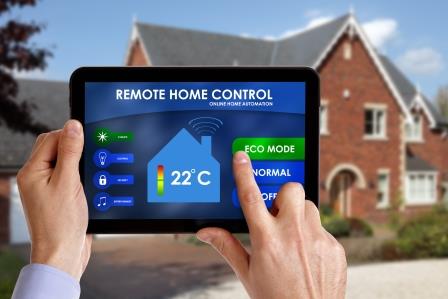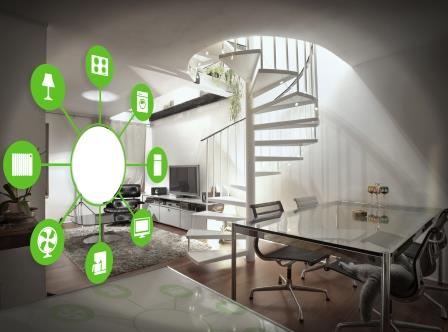By Sue Coakley | Wed, June 8, 16
It’s been 20 years since utility companies, policymakers and efficiency leaders got together to form what would become “the Northeast Energy Efficiency Partnerships” (NEEP). In 2016, as we navigate a period of rapid change in the energy landscape, NEEP looks back on the maturation of efficiency and how far the nation, the region and the industry have come in embracing efficiency as a resource that can help enable the energy systems of the future: clean, smart, responsive, resilient.
According to founding Executive Director Sue Coakley, NEEP and other early regional energy efficiency organizations (REEOs) were formed when it became clear that strategic multi-state collaboration among energy efficiency actors — utilities, state agencies and federal efficiency programs — was needed to effectively advance energy efficiency and transform markets for the long term.
Below, Coakley reflects on the history of energy efficiency, and where we are headed in this next generation.
The first generation of efficiency programs: “Just Use Less”
The beginning of energy efficiency as we know it was in the 1970s and ‘80s, and was called “conservation.” Responding to the price shocks of the Arab Oil Embargo, Congress established the Department of Energy in 1977 to, among other things, diversify energy resources and promote conservation. The Low Income Weatherization Assistance Program (WAP) was among its first programs. To date, WAP has served over 7.4 million homes, helping the nation’s most vulnerable reduce energy costs while increasing comfort and safety. Another early program – the Residential Conservation Service (RCS) – established by the 1978 National Energy Conservation Act, promoted energy audits and asked consumers to insulate their homes, weather-strip windows, wrap water heaters, turn down thermostats, and turn-off lights.
Seeing efficiency as an energy resource
Energy efficiency as a resource got a boost in our region when states implemented the Public Utility Regulatory Policy Act of 1978 (PURPA), which required regulated utilities to purchase power from independent power producers at an “avoided cost” based on the price they would otherwise pay to build a power plant or procure supply to meet customer demand for electricity. Faced with dual rate shocks from natural gas and petroleum price spikes and rate-basing expensive nuclear power plants, public utility commissions reasoned that utilities should be just as willing to pay this avoided cost for a kWh saved as a kWh generated.
This led to “standard offer” efficiency programs that offered a price per kWh paid for verified energy savings — a strategy that advanced the nascent energy performance contracting industry. This greatly increased energy efficiency investments and led to evaluation, measurement and verification (EM&V) protocols to validate claimed energy savings. Regulators, however, realized that a significant amount of energy savings could be achieved at a cost much lower than the avoided cost of new supply, and that ratepayers would be better served if utilities acquired energy savings at their actual cost versus always paying the avoided cost of new supply. Thus began a new generation of targeted efficiency programs that offered incentives to customers and utilities to acquire energy savings.
Emergence of resource acquisition programs
Integrated least-cost resource planning spawned efficiency program portfolios with differentiated products designed to overcome sector-specific market barriers to increased energy efficiency. These “resource acquisition” programs offered customers financial incentives, rebates and financing, along with technical assistance to unlock cost-effective energy savings as a strategy to defer more costly energy supplies. Some utilities implemented radio-controlled demand response programs that “cycled-off” air conditioners and water heaters during high cost periods of peak energy need. As resource acquisition programs became more sophisticated, so did regulatory policies that offered utilities performance incentives to meet energy savings goals along with dollar-for-dollar program cost recovery, and lost revenue or decoupling mechanisms with rigorous EM&V and reporting.
Working together to transform markets
The success of resource acquisition programs yielded market impacts beyond cost-effective energy savings. With efficiency programs ramping up across the region and growing consumer recognition of the ENERGY STAR® brand to distinguish high efficiency options, efficiency programs were also affecting manufacturer, distributor, and retailer product stocking and sales practices. They were also increasing the knowledge and ability of architects, engineers and builders to provide superior energy efficiency in home and building design and construction. This led to programs designed to achieve large-scale “market transformation” through coordination with supply chain actors to increase the availability of and demand for high efficiency product.
 In many cases, these programs used national and regional brands to distinguish quality energy efficient products. In addition to ENERGY STAR®, efficiency programs used NEEP’s regional brands such as “Motor-Up,” to promote premium commercial and industrial motors across the Northeast and Mid-Atlantic, “Cool Choice,” to promote high efficiency commercial HVAC, and the DesignLights Consortium™, to distinguish high efficiency lighting design and equipment for the commercial sector.
In many cases, these programs used national and regional brands to distinguish quality energy efficient products. In addition to ENERGY STAR®, efficiency programs used NEEP’s regional brands such as “Motor-Up,” to promote premium commercial and industrial motors across the Northeast and Mid-Atlantic, “Cool Choice,” to promote high efficiency commercial HVAC, and the DesignLights Consortium™, to distinguish high efficiency lighting design and equipment for the commercial sector.
NEEP’s Northeast Collaborative for High Performance Schools (NE-CHPS) guidelines, developed in collaboration with the New Buildings Institute’s Advanced Building Guidelines, offered consistent regional guidance to promote the design, construction and operation of schools with superior energy performance. These led to NEEP’s introduction of model “stretch” codes adopted by states and communities to raise the bar for efficiency in new construction and renovation. Active support for new state and federal appliance standards, as well as state adoption of more stringent building energy codes, locked in these market effects such that new efficiency baselines were established for many types of equipment as well as in the design and construction of homes and buildings.
State and local governments lead by example
The success of efficiency programs coupled with state and local policy commitments and plans to reduce greenhouse gas emissions led to “lead-by-example” efficiency initiatives within state and local governments. These included commitments to improve public building energy performance, building energy rating and disclosure initiatives, and zero energy public building initiatives. States increased their sophistication in using performance contracting to access needed capital and services to improve building energy performance, a best practice that some states extended to local government.
States also supported the inclusion of energy efficiency in electric power system capacity and reliability markets, a development that spurred state regulators to commit to more consistent, transparent, and publicly accessible EM&V to increase the credibility and market valuation of energy efficiency. This culminated in resolutions approved at each the NECPUC and MACRUC annual meetings in 2008. NEEP responded by establishing the Regional EM&V Forum to support state regulators in a variety of ways —use of common best-practice EM&V protocols, participation in joint studies to provide common data inputs, and creation of the Regional Energy Efficiency Database (REED) to make EM&V results transparent and readily accessible for planning, forecasting and analysis of efficiency program impacts.
In recent years, the summary impact of federal, state, community and ratepayer-funded programs is reflected in the flattening and even decline of electric energy use while business development and job growth continued.
The “digital revolution” and putting customers at the center
More recently, the “digital revolution” and the Internet of Things™ have profoundly affected energy efficiency programs. First, it brings to energy efficiency programs the power of massive amounts of data and data analytics to broaden and deepen the reach and impact of efficiency programs, a trend that ACEEE calls “Intelligent Efficiency.” This includes a wide range of products that collect and analyze customer end-use data (e.g., through advanced metering infrastructure “AMI” technology) coupled with demographic and other data sources to provide insight into customer energy use and energy efficiency and peak demand reduction savings opportunities.
 Home Energy Management Systems (HEMS), building controls, and Software as a Solution (SaaS) systems now harness the power of machine learning, data analytics, social networking, and cloud computing to provide customer-specific “dashboards” of actionable information. This has spawned a new generation of behavioral programs designed to increase efficiency and reduce peak demand through customer-managed energy use.
Home Energy Management Systems (HEMS), building controls, and Software as a Solution (SaaS) systems now harness the power of machine learning, data analytics, social networking, and cloud computing to provide customer-specific “dashboards” of actionable information. This has spawned a new generation of behavioral programs designed to increase efficiency and reduce peak demand through customer-managed energy use.
Related to this is the use of social media and closed-loop marketing to influence consumer selection of high-efficiency products through integrated marketing of in-store and targeted on-line consumer messaging. The Digital Revolution has ushered in a proliferation of plug-in devices that increase home and business use of electricity — a broad, diverse and rapidly growing end-use that calls for new strategies to increase efficiency. In response, efficiency programs encourage customer selection of high-efficiency electronics as well as the use of energy management systems such as smart power strips that limit energy use when electronics are dormant. In addition, the Digital Age has introduced new data collection and analytic tools that assist program EM&V by collecting and assessing customer and program data.
Next Generation Efficiency: integrating efficiency and distributed energy resources
With efficiency programs setting annual savings targets of up to three percent of electric retail energy sales, and the rapid advancement of cost-effective distributed energy resources, the next frontier is about engaging customers and markets to create new solutions and business models. Efficiency programs are evolving now to focus more on customer engagement and market solutions that provide comprehensive, progress services that have the potential to completely change how we receive energy and how it is provided. Next Generation Energy Efficiency is responsive to what customers are asking for and what the market is providing. It is about a very vibrant market with new players coming in and offering things in ways we’ve not seen before. It’s because of data, electronic media, and the lower cost of renewables. It’s due to the success of efficiency to reduce footprints, save money and enable people to invest in other things.
I think of how we’ve watched technology change over the 20 years NEEP has been here. We’ve almost always underestimated how fast technology will change. Take lighting for example. Four years ago, conventional wisdom was that high quality, white LED bulbs were a long way off. Now, they have come so far in quality and performance with competitive pricing, CFLs — once the workhorse of residential lighting programs — are now becoming only a “niche” product with limited shelf space.
 Change is coming quickly. For the innovators in markets and programs, it’s hard to be in the current regulated structure as these new markets develop. We are trying to figure out answers to questions like: What is the role of the grid? Who will pay for the grid that will enable the future we want to see? The questions are very large and market solutions are coming very rapidly. Of course, energy storage is a game-changer in matching distributed renewable energy production to customer and grid needs. In this Wild West market, there are pioneers who are forging ahead, takeovers and mergers, and technologies and services that are no longer needed.
Change is coming quickly. For the innovators in markets and programs, it’s hard to be in the current regulated structure as these new markets develop. We are trying to figure out answers to questions like: What is the role of the grid? Who will pay for the grid that will enable the future we want to see? The questions are very large and market solutions are coming very rapidly. Of course, energy storage is a game-changer in matching distributed renewable energy production to customer and grid needs. In this Wild West market, there are pioneers who are forging ahead, takeovers and mergers, and technologies and services that are no longer needed.
Going forward, energy efficiency enables the transition to a new energy future. It’s the money we’re saving, the smaller footprint we’re serving. It’s the controls we use to manage our energy and be smart about it, and allow us to integrate other options and be connected to the grid. Who will provide those services, technologies, and solutions? That story is being written today.
